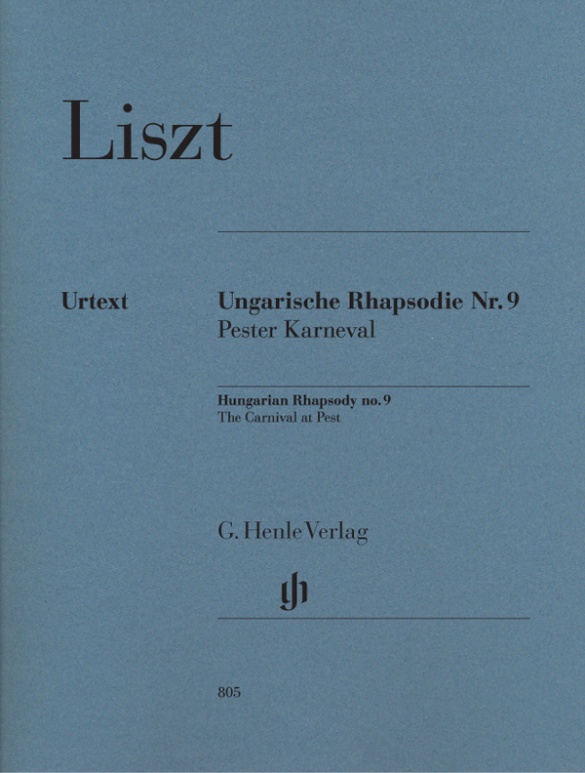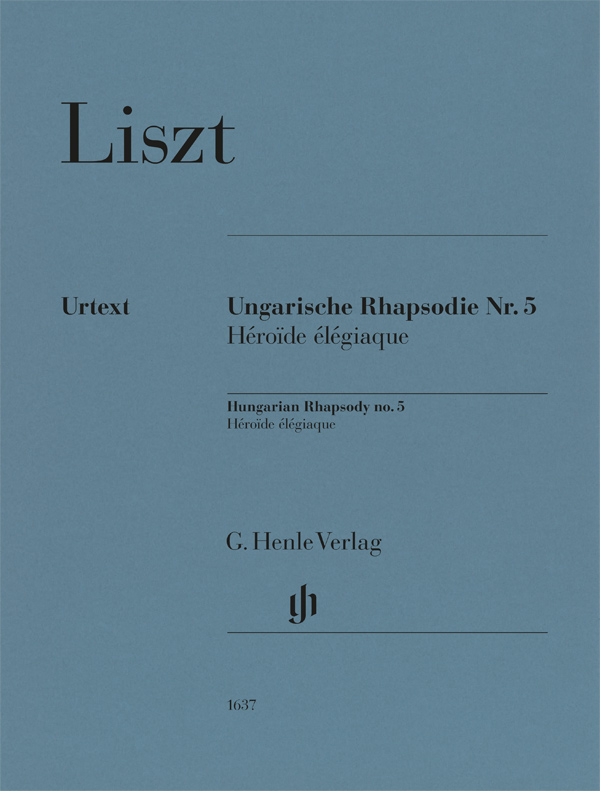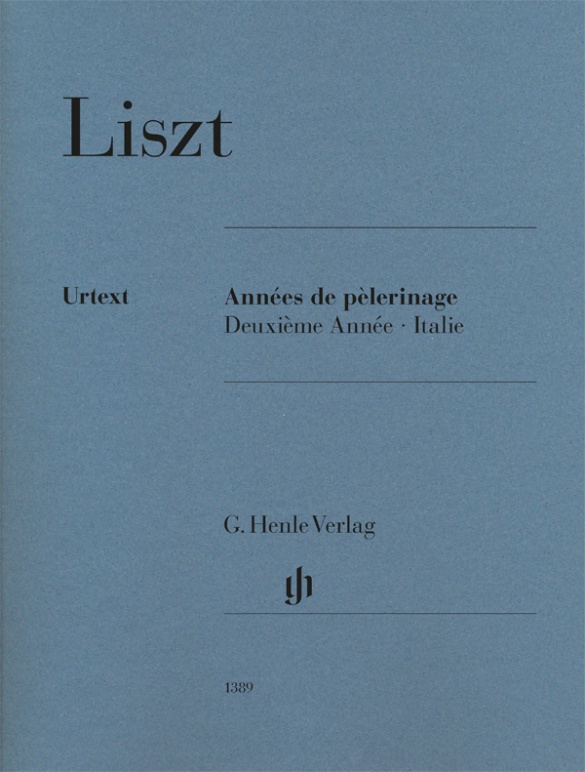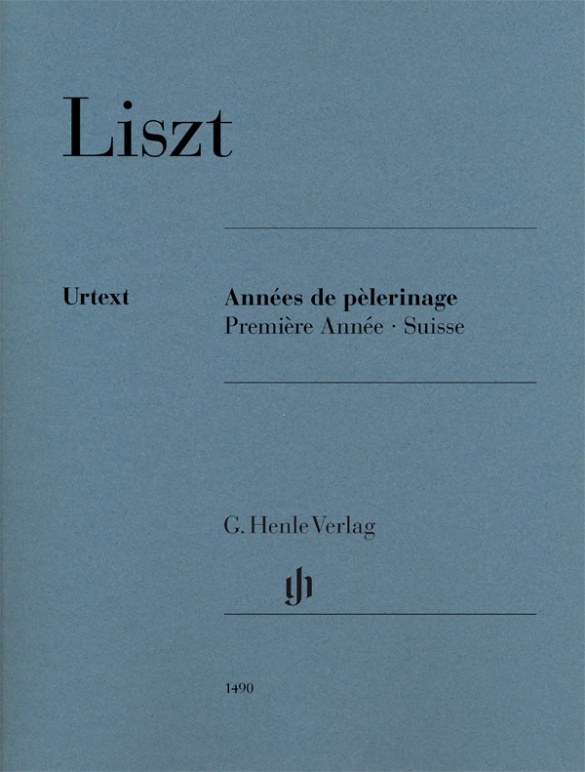

Franz Liszt
Années de pèlerinage, Première Année - Suisse
The three volumes of the “Années de pèlerinage” belong to the core of Liszt’s piano oeuvre. In the first volume, “Suisse”, the composer realised impressions of an extended sojourn in Switzerland in 1835/36. The pieces, for the most part published already in 1840/41, were later substantively reworked by Liszt, and the collection enlarged by two numbers, until it received its final form in 1855. For the revision of the Henle Urtext edition, it was possible for the first time to also take into account the engraver’s copy of the first edition that was once again accessible. The resulting modification in the weighting of the sources and further important new findings in Liszt research are presented in detail in the preface and the comments. We were able to enlist the Swiss pianist Francesco Piemontesi for the fingerings.
Content/Details
About the Composer
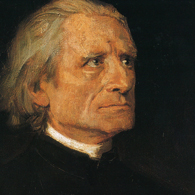
Franz Liszt
The most famous piano virtuoso of the nineteenth century is regarded as the most influential artist and composer (with Berlioz, Wagner) of the so-called New German School. His immense musical oeuvre comprises, above all else, works for solo piano, including numerous transcriptions; he also devised the symphonic poem. Important, too, are his sacred and secular choral works and songs.
| 1811 | Born in Doborján/Raiding (Sopron) on October 22, son of an official in the service of Prince Esterházy. First piano lessons from his father, early first attempts at composition, first public performance at age nine. |
| 1822 | Relocation of the family to Vienna, studies with Carl Czerny and Antonio Salieri. |
| 1823 | Relocation of the family to Paris. Composition studies with Ferdinando Paër and Antonín Reicha (1826). Performances in salons, concerts. |
| 1824–27 | Concert tours through France, to England and Switzerland. Composition of opera paraphrases for piano. |
| 1830 | Acquaintance with Berlioz, self-study by reading. He becomes Parisian society’sfavourite pianist and piano teacher. |
| 1835 | He moves to Switzerland with Countess Marie d’Agoult: their first child together, Blandine-Rachel, is born here. He continues concertizing in Paris. |
| from 1839 | Continuous concert tours throughout Europe. |
| from 1847 | Symphonic poems, including No. 2, “Tasso: lamento e trionfo”; No. 1, “Ce qu‘on entend sur la montagne” (‘Bergsymphonie,’ ‘Mountain Symphony’); “A Faust Symphony in Three Character Pictures”; “A Symphony to Dante’s Divine Comedy” (‘Dante Symphony’); as well as [No. 11], “Hunnenschlacht” (“Battle of the Huns”). |
| 1848–61 | Kapellmeister in Weimar; he advocates for progressive music (Wagner, Schumann, Berlioz). |
| 1857–62 | Oratorio, “The Legend of St. Elisabeth.” |
| 1861–68 | Resident in Rome. |
| 1865 | Takes minor holy orders. |
| 1866–72 | Oratorio, “Christus.” |
| 1871 | Appointed Hungarian court councilor; he lives in Rome, Weimar, and Budapest. |
| 1886 | Death in Bayreuth on July 31. |
About the Authors

Peter Jost (Editor)
Dr. Peter Jost, born in 1960 in Diefflen/Saar, read musicology, German and comparative studies at Saarland University in Saarbrücken. He did his PhD in 1988 with a thesis on Robert Schumann’s Waldszenen.
From November 1991 to April 2009 he was a research associate at the Richard Wagner Complete Edition in Munich, and since May 2009 has been an editor at G. Henle Publishers. His Urtext editions comprise predominantly French music of the 19th and 20th centuries, including works by Lalo, Saint-Saëns and Ravel.
Product Safety Informations (GPSR)

G. Henle Verlag
Here you can find the information about the manufacturer of the product.G. Henle Verlag e.K.
Forstenrieder Allee 122
81476 München
Germany
info@henle.de
www.henle.com
Allein schon das Vorwort von Peter Jost, in dem der Autor ausführlich auf die recht komplizierte Entstehungs- und Editionsgeschichte eingeht, ist fast dreimal so lang wie das von Ewald Zimmermann in der alten Ausgabe. Überdies wartet die Neuedition mit einem weitaus detaillierteren kritischen Bericht auf, in dem so ziemlich alles niedergelegt ist, was man über die verschiedenen Quellen und Lesarten wissen sollte. Auch dass man die teils in englischer, teils in französischer Sprache abgefassten Mottos im Notenteil übersetzt und Etienne de Sénancours Abhandlung „Über den romantischen Ausdruck und über den Kuhreigen“ zur Gänze abgedruckt hat, wird jeder, der sich mit dem Zyklus auseinandersetzt, zu schätzen wissen.
Piano News, 2021Zoals we van Henle gewend zijn is ook deze Urtext zeer muzikaal vormgegeven – je hoeft alleen al naar de zestienden golfslag van het Lac de Wallenstadt te kijken om vast te stellen dat men het niet gemakzuchtig bij een standaardweergave vanuit de software heeft gehouden, maar dat er grote zorg is besteed aan de weergave van het verschillend karakter van de bewegingen in linker- en rechterhand.
de nieuwe muze, 2021recommendations
autogenerated_cross_selling
Further editions of this title
Further editions of this title


